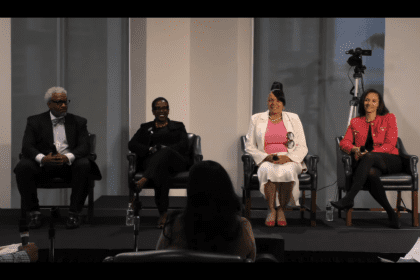Loneliness has quietly earned a spot alongside heart disease and diabetes as one of the most dangerous health conditions facing modern society. What was once dismissed as an unfortunate but relatively harmless emotional state has been reclassified as a legitimate public health crisis that increases mortality risk more than obesity and rivals the health impact of smoking 15 cigarettes daily.
The shift from viewing loneliness as a personal problem to recognizing it as a societal health emergency reflects decades of research revealing the profound physiological effects of social isolation. Your immune system, cardiovascular health, cognitive function, and mental well-being all deteriorate measurably when you lack meaningful social connections.
This isn’t about people feeling sad or having fewer friends than they’d like. This is about a documented medical phenomenon where chronic loneliness triggers biological processes that systematically damage your body and mind in ways that can literally shorten your life by years.
Your body treats loneliness like a physical injury
When you experience chronic loneliness, your immune system responds as if you’re under constant threat, triggering inflammatory processes that are meant to help you heal from wounds but become destructive when they persist long-term. This chronic inflammation contributes to heart disease, stroke, diabetes, and other serious health conditions.
Lonely people show elevated levels of cortisol, the stress hormone that’s helpful in short bursts but toxic when constantly elevated. This persistent stress response affects everything from blood pressure and blood sugar regulation to sleep quality and cognitive function, creating a cascade of health problems.
The cardiovascular effects of loneliness are particularly severe, with isolated individuals showing increased risk of heart attacks, strokes, and high blood pressure. The stress of social isolation puts constant strain on your circulatory system in ways that mirror the effects of other major health risk factors.
Sleep disruption from loneliness creates additional health problems because isolated people often experience poor sleep quality even when they get adequate hours of rest. The hypervigilance that comes with feeling socially disconnected interferes with the deep, restorative sleep necessary for physical and mental health.
Loneliness also accelerates cognitive decline and increases dementia risk in ways that researchers are still working to understand. The lack of social stimulation and engagement appears to contribute to brain deterioration that goes beyond normal aging processes.
Modern life systematically destroys social connections
Contemporary society has created living conditions that naturally promote isolation despite technological connectivity that should theoretically bring people closer together. Suburban sprawl, long commutes, remote work, and digital communication have fundamentally altered how people form and maintain relationships.
The decline of traditional community institutions like religious organizations, neighborhood groups, and extended family living arrangements has eliminated many of the social structures that historically provided automatic connection and support. People now have to actively create social networks that previous generations inherited naturally.
Social media and digital communication create the illusion of connection while often providing less emotional satisfaction and support than in-person relationships. The superficial nature of many online interactions can actually increase feelings of loneliness by highlighting the contrast between digital connection and meaningful relationships.
Economic pressures that require longer work hours, multiple jobs, or frequent relocations make it difficult to invest the time and consistency necessary for building deep friendships and community connections. The hustle culture that dominates modern work life often sacrifices social relationships for career advancement.
Urban living conditions that pack people closely together physically while providing little opportunity for meaningful interaction can create particularly intense loneliness. Being surrounded by strangers without social connection often feels more isolating than being alone in natural settings.
Certain groups face disproportionate loneliness risks
Elderly individuals experience especially severe loneliness as their social networks shrink through death, illness, and mobility limitations. The combination of reduced social opportunities and accumulated losses creates loneliness that can become life-threatening for older adults who lack adequate social support.
Young adults face unique loneliness challenges as they navigate major life transitions like college, career changes, and relationship formation without the social structures that supported previous generations. The pressure to appear successful and connected on social media can mask profound isolation among people in their twenties and thirties.
Caregivers for family members with chronic illnesses or disabilities often experience intense loneliness as their caregiving responsibilities limit their ability to maintain social connections. The isolation that comes with caregiving duties can create serious health risks for people who are already dealing with significant stress.
People with chronic health conditions frequently experience loneliness as their conditions limit their ability to participate in social activities and maintain relationships. The combination of physical limitations and social isolation can create downward spirals that worsen both health conditions and loneliness.
LGBTQ individuals, particularly in less accepting communities, may face loneliness related to hiding their identity or being rejected by family and community members. This type of social rejection creates particularly severe health risks because it combines loneliness with identity-related stress.
The economic costs are staggering
Healthcare systems are spending billions of dollars treating the physical and mental health consequences of loneliness without addressing the underlying social isolation that drives these expensive medical problems. Emergency room visits, hospitalizations, and chronic disease management often stem from loneliness-related health deterioration.
Workplace productivity losses from loneliness-related health problems, absenteeism, and reduced engagement cost employers enormous amounts in reduced performance and increased healthcare costs. Lonely employees are more likely to call in sick, perform poorly, and leave their jobs, creating expensive turnover and training costs.
The mental healthcare system faces overwhelming demand partly because loneliness contributes to depression, anxiety, and suicide risk that require expensive treatment. Addressing social isolation could potentially reduce the burden on mental health services while improving outcomes for millions of people.
Elder care costs increase dramatically when older adults lack family and community support systems that could help them remain independent longer. Socially isolated seniors often require expensive institutional care sooner than those with strong social connections.
The criminal justice system also bears costs related to loneliness, as social isolation contributes to substance abuse, antisocial behavior, and other problems that result in arrests, court proceedings, and incarceration expenses.
Solutions require community-wide approaches
Individual therapy and medical treatment can help people cope with loneliness-related health problems, but addressing the public health crisis requires systematic changes to how communities are designed and how social connections are supported at the policy level.
Urban planning that prioritizes walkable neighborhoods, community gathering spaces, and mixed-use development can create more opportunities for natural social interaction and community building. The physical design of communities directly affects residents’ ability to form and maintain social connections.
Workplace policies that support work-life balance, flexible scheduling, and team building can help employees maintain social connections while meeting professional responsibilities. Employers are recognizing that supporting employee social connections benefits both individual health and company performance.
Educational institutions can play crucial roles in teaching social skills, creating community connections, and providing ongoing opportunities for learning and engagement throughout people’s lives. Lifelong learning programs often serve important social functions beyond their educational content.
Healthcare systems are beginning to screen for loneliness as a health risk factor and prescribe social interventions alongside medical treatments. Some healthcare providers now include social connection assessments in routine care and provide resources for addressing isolation.
Building resilience against the loneliness epidemic
Preventing and addressing loneliness requires both individual effort and community support that recognizes social connection as a basic human need rather than a luxury or personal responsibility. The most effective approaches combine personal relationship building with structural changes that make connection easier and more accessible.
Prioritizing quality over quantity in relationships helps build the deep connections that provide genuine social support and health benefits. Having a few close, reliable relationships is more protective against loneliness than having many superficial social contacts.
Regular community involvement through volunteering, religious organizations, hobby groups, or neighborhood activities creates opportunities for ongoing social contact and shared purpose that can provide resilience against isolation during difficult life transitions.
Developing social skills and emotional intelligence helps people form and maintain relationships more effectively, particularly for individuals who didn’t learn these skills naturally or who face social anxiety that interferes with connection.
Technology can be used strategically to support rather than replace in-person relationships, helping people coordinate activities, maintain contact, and find opportunities for face-to-face interaction rather than substituting digital communication for real social connection.
The recognition of loneliness as a public health threat represents a crucial step toward addressing one of the most serious health challenges facing modern society. By treating social connection as essential for health rather than optional for happiness, communities can begin implementing the systematic changes necessary to create healthier, more connected societies that support human well-being.















